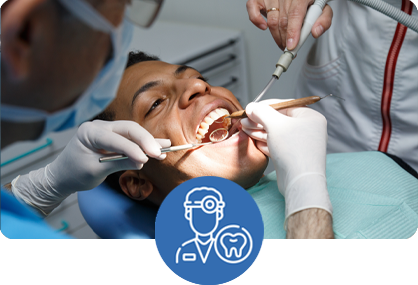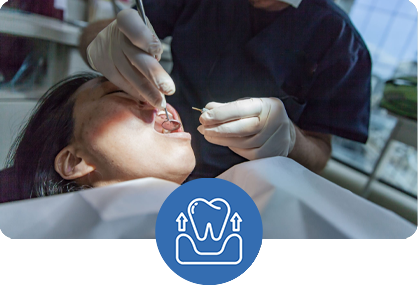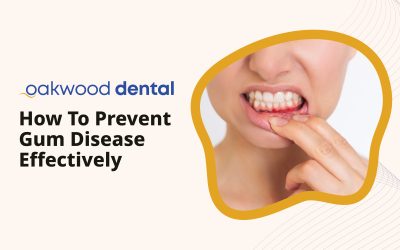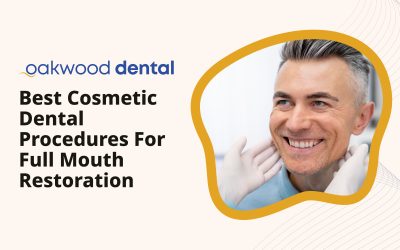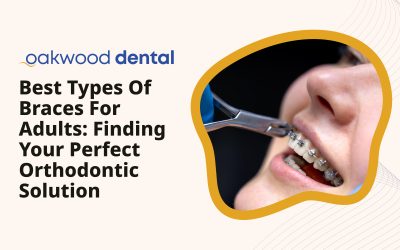Essential Points for Saving on Emergency Dental Care
- Know what constitutes a true dental emergency to avoid unnecessary urgent care costs
- Maintain regular dental checkups to prevent emergencies from occurring
- Consider dental insurance plans that cover emergency procedures
- Ask about payment plans and financing options before treatment begins
- Look for dental practices offering emergency care packages or membership plans
- Take appropriate first-aid measures to potentially reduce treatment complexity
Understanding Dental Emergencies
Dental emergencies can occur unexpectedly, causing significant discomfort and requiring immediate attention. At Oakwood Dental Clinics, we understand that these situations not only bring physical pain but can also create financial stress. Understanding what constitutes a true dental emergency is the first step toward managing both your oral health and your finances effectively.
A dental emergency typically involves severe pain, bleeding, or trauma that requires immediate professional intervention. Common dental emergencies include knocked-out teeth, severe toothaches, broken teeth, and dental abscesses. Recognizing these situations can help you make informed decisions about seeking urgent care and potentially save you money in unnecessary emergency treatment fees. When experiencing acute dental pain or trauma, proper identification of the issue’s severity becomes crucial to determining whether immediate intervention is required.
Not all dental issues require emergency treatment, however. Understanding the difference between true emergencies and non-urgent dental problems can help you avoid unnecessary emergency fees. For instance, a mild toothache that responds to over-the-counter pain medication can often wait for a regular appointment, while a tooth that has been knocked out requires immediate attention to save it. Dental professionals generally recommend seeking emergency care when experiencing uncontrollable bleeding, severe facial or dental trauma, extreme swelling that may compromise breathing, or infections accompanied by fever – conditions that could potentially be life-threatening if left untreated.
When experiencing dental discomfort, consulting with dental professionals about common dental emergencies can help determine the appropriate course of action. This knowledge not only protects your oral health but can also prevent unnecessary emergency expenses. Many dental practices offer telephone consultations that can help you assess whether your situation requires immediate attention or can safely wait for a standard appointment, potentially saving you significant costs associated with emergency treatment surcharges.
Preventative Measures to Avoid Emergency Costs
The most effective way to save on emergency dental procedures is to prevent them from occurring in the first place. Regular dental checkups and cleanings can identify potential issues before they escalate into painful and costly emergencies. Dental professionals estimate that money spent on preventive care can save significantly more on emergency and restorative treatments in the future – making prevention not just healthier but significantly more economical.
At Oakwood Dental Clinics, we recommend scheduling dental checkups every six months. These regular visits allow our dental professionals to detect early signs of decay or infection, address minor issues before they become emergencies, provide professional cleanings to prevent gum disease, and offer guidance on proper home care techniques. During these routine examinations, dentists can identify weakened tooth structures, early signs of infection, or developing cracks that might later result in painful emergencies if left untreated. Early intervention typically involves simpler, less invasive, and more affordable procedures compared to emergency treatments.
Maintaining good oral hygiene at home is equally important. Daily brushing and flossing remove plaque and bacteria that can lead to infections and abscesses. Using protective gear during sports activities can prevent traumatic dental injuries that often result in emergency visits. Research shows that athletes who don’t wear mouthguards are 60 times more likely to experience dental injuries during contact sports – injuries that frequently require costly emergency interventions and potentially complex restorative procedures.
For patients with specific risk factors, such as gum disease, specialized periodontal care may be recommended. Addressing these conditions proactively can significantly reduce the likelihood of painful and expensive emergency situations. Untreated periodontal disease can progress to cause tooth mobility, abscesses, and even tooth loss, all of which may require emergency intervention and extensive, costly treatments to resolve.
Daily Care
Brush twice daily with fluoride toothpaste and floss once daily to remove plaque and prevent decay.
Regular Checkups
Visit your dentist every six months for professional cleanings and examinations.
Protective Gear
Wear mouthguards during sports or physical activities to prevent traumatic injuries.
Healthy Diet
Limit sugary foods and beverages that contribute to tooth decay and dental emergencies.
Insurance Options for Emergency Dental Care
Having appropriate dental insurance can significantly reduce the financial burden of emergency dental procedures. Understanding your insurance coverage before an emergency occurs is crucial for making informed decisions during stressful situations. Many patients are unaware of their specific coverage details until they face an emergency, often leading to unexpected out-of-pocket expenses that could have been mitigated with proper planning.
Many dental insurance plans offer coverage for emergency procedures, but the extent of coverage can vary widely. Some plans may cover up to 80% of emergency treatment costs, while others might have lower coverage rates or higher deductibles for urgent care. It’s essential to review your policy’s provisions specifically related to emergency services, as these often differ from coverage for routine or planned procedures. Some insurance plans categorize certain emergency treatments differently, potentially affecting your out-of-pocket costs.
When selecting a dental insurance plan, consider these factors: coverage percentages for emergency procedures, annual maximums and how they might affect emergency care, waiting periods that could impact immediate coverage, network restrictions that might limit your choice of emergency providers, and coverage for specific emergency procedures like extractions or root canals. Many insurance plans implement a tiered coverage system where preventive care receives the highest coverage (often 100%), basic procedures receive moderate coverage (70-80%), and major procedures – which many emergency treatments fall under – receive lower coverage (50-60%).
For those without traditional dental insurance, dental discount plans can be an alternative worth considering. These plans typically charge an annual fee in exchange for discounted rates on various dental procedures, including emergency services. While not insurance, these plans can provide significant savings, especially for emergency procedures like tooth extractions that might otherwise be costly. Dental discount plans often provide immediate benefits without waiting periods, making them particularly valuable for those who might need emergency care in the near future.
At Oakwood Dental Clinics, we work with various insurance providers and can help you understand your coverage options. Choosing the right emergency dental provider who accepts your insurance is an important consideration in managing costs. Our administrative team can verify your benefits before treatment begins and provide estimates of your potential out-of-pocket expenses, helping you make financially informed decisions during dental emergencies.
Payment Plans and Financing Options
When facing emergency dental procedures, payment plans and financing options can make necessary treatment more accessible. Many dental practices offer flexible payment arrangements to help patients manage the cost of unexpected dental care. These financial solutions can be particularly valuable during emergencies when treatment cannot be delayed and insurance coverage may be limited or unavailable.
At Oakwood Dental Clinics, we understand that emergency dental care can create financial strain. We offer several payment options to help make treatment more affordable. Our financial coordinators work closely with patients to identify the most suitable payment solution for their specific circumstances, ensuring that financial concerns don’t prevent necessary emergency treatment.
In-house payment plans allow you to spread the cost of treatment over several months, often without interest if paid within a specified timeframe. These arrangements typically require minimal paperwork and can be established quickly during your emergency visit. Many practices will work with patients to determine monthly payment amounts that fit within their budget constraints while ensuring timely completion of the payment schedule. This approach allows patients to receive immediate care without the full financial burden upfront.
Third-party financing through services like CareCredit or Lending Club provide healthcare-specific credit lines that can be used for dental emergencies, often with promotional interest-free periods. These financing options typically offer longer repayment terms than in-house plans and may provide higher credit limits for more extensive emergency treatments. Many of these services offer online pre-approval processes that can be completed before your emergency appointment, streamlining the financial aspects of your care.
Some practices offer sliding scale fees based on income and ability to pay, particularly for patients without insurance. Dental membership plans can provide discounts on emergency services for a regular monthly or annual fee. These approaches recognize that financial circumstances vary among patients and aim to make emergency dental care accessible to all who need it, regardless of their financial situation.
When facing a dental emergency, don’t hesitate to discuss financial concerns with your provider. Many dental offices have financial coordinators who can help you navigate payment options and find a solution that works for your budget while ensuring you receive necessary care. Being transparent about your financial limitations allows the dental team to work with you to find the most cost-effective approach to addressing your emergency.
Dental Membership Programs
Dental membership programs offer an alternative to traditional insurance and can provide significant savings on emergency dental procedures. These programs typically involve paying a regular fee directly to a dental practice in exchange for discounted services. Unlike insurance, these plans eliminate third-party approvals, waiting periods, and annual maximums that can complicate access to emergency care when it’s most needed.
Many dental practices offer membership plans that include complimentary preventive care (exams, cleanings, X-rays), discounts on emergency procedures (typically 15-25%), no annual maximums or waiting periods, immediate eligibility for discounts on emergency care, and simplified fee structures with no claims or paperwork. These plans are particularly beneficial for patients who might otherwise delay seeking emergency care due to cost concerns, as the predetermined discounts provide financial predictability during urgent situations.
These plans can be particularly valuable for individuals who experience common dental emergencies but lack traditional insurance coverage. The predictable costs and immediate savings can make emergency dental care more accessible. For patients who have experienced dental emergencies in the past or have risk factors that make future emergencies more likely, these membership programs can provide substantial financial benefits over time.
At Oakwood Dental Clinics, our membership program provides patients with peace of mind knowing they’ll receive discounted emergency care when needed. This approach not only makes emergency treatment more affordable but also encourages regular preventive visits that can help avoid emergencies altogether. Our program is designed to remove financial barriers to both routine and emergency care, ensuring that patients can maintain optimal oral health without undue financial stress.
When considering a dental membership program, evaluate the monthly or annual fee compared to potential savings, specific discounts on emergency procedures you might need, coverage for family members, additional benefits beyond emergency care, and restrictions or limitations on services. It’s important to understand exactly which emergency procedures are covered under the discount structure and whether there are any exclusions or limitations that might affect your specific needs.
First-Aid Measures to Reduce Treatment Costs
Taking appropriate first-aid measures during a dental emergency can sometimes reduce the complexity and cost of the required treatment. Knowing how to respond in the critical moments following a dental injury can make a significant difference in both treatment outcomes and expenses. Proper initial management can preserve dental structures, reduce infection risk, and potentially decrease the extent of professional intervention needed – all factors that can substantially impact the final cost of emergency dental care.
For a knocked-out tooth, proper handling can increase the chances of successful reimplantation: handle the tooth by the crown (not the root), gently rinse it with milk or saliva (never water), try to reinsert it into the socket, or store it in milk or saliva, and seek emergency dental care within 30-60 minutes. Research shows that a knocked-out tooth has approximately a 90% chance of successful reimplantation if properly preserved and treated within 30 minutes – a success rate that drops significantly with each additional hour, potentially necessitating more expensive tooth replacement options if reimplantation fails.
For a cracked or broken tooth, taking these steps can prevent further damage: rinse your mouth with warm water, apply a cold compress to reduce swelling, take over-the-counter pain medication if needed, and cover any sharp edges with dental wax if available. Proper initial management can prevent further fracturing or damage to the tooth structure, potentially reducing the complexity of the required restoration and preserving more natural tooth structure – factors that generally correlate with lower treatment costs.
Understanding what to do when a dental emergency occurs can help minimize damage and potentially reduce the extent of treatment needed. For example, properly preserving a knocked-out tooth might make reimplantation possible, avoiding the need for more expensive tooth replacement options. Similarly, appropriate management of a dental infection with over-the-counter pain relievers and salt water rinses while arranging emergency care can help contain the infection and potentially reduce the complexity of treatment required.
Creating a dental emergency kit for your home can help you respond effectively to unexpected dental issues. Include items such as gauze pads for controlling bleeding, a small container with lid for storing a knocked-out tooth, dental wax for covering broken teeth with sharp edges, over-the-counter pain relievers, and contact information for your emergency dentist. Having these supplies readily available can facilitate proper first-aid measures during the critical initial period following a dental injury – potentially improving outcomes and reducing treatment costs.
Comparing Emergency Dental Providers
When facing a dental emergency, choosing the right provider can significantly impact both the quality of care and the cost. Taking time to research and compare emergency dental providers before an emergency occurs can help you make informed decisions during stressful situations. This preparation allows you to consider factors beyond just availability, ensuring you receive appropriate care at a reasonable cost when emergencies arise.
When choosing an emergency dentist, consider these factors that can affect both care quality and cost. Understanding these elements before an emergency occurs allows you to make more balanced decisions rather than simply selecting the first available provider during a crisis.
Hours of availability can impact pricing, as providers with extended or weekend hours may charge less than those offering middle-of-the-night emergency services. Some practices maintain dedicated emergency hours with standard fees, while others apply significant surcharges for after-hours treatment. Understanding these differences can help you balance urgency with cost-effectiveness when seeking emergency care.
Fee structures vary, with some practices having transparent fee schedules for emergency procedures, while others may charge premium rates for after-hours care. Practices that clearly publish their emergency fees typically provide more predictable costs compared to those with variable pricing structures. Some emergency dental providers charge a standard emergency examination fee plus procedure costs, while others incorporate all emergency services into a comprehensive fee structure.
Insurance acceptance is important to verify, as you’ll want to know which insurance plans the provider accepts and whether they’re in-network with your plan. In-network providers typically offer significantly lower out-of-pocket costs compared to out-of-network options, especially for emergency procedures that may already have higher fee schedules. Some emergency dental providers may also offer assistance with insurance claim submission, helping maximize your benefits during emergency situations.
Treatment approach can vary between dentists, with some recommending more conservative (and less expensive) treatments when appropriate. Providers who prioritize tooth preservation over extraction when feasible may offer more cost-effective long-term solutions, even if the initial emergency treatment appears more expensive. Understanding a provider’s philosophy regarding emergency treatment can help you anticipate both clinical approaches and associated costs.
Negotiating Dental Costs
Many patients don’t realize that dental costs can sometimes be negotiated, especially for emergency procedures. Understanding how to approach these conversations can help you save on necessary dental care. While dental practices have established fee schedules, there is often flexibility in how these fees are applied, particularly for patients experiencing financial hardship or those paying out-of-pocket for emergency services.
Here are effective strategies for discussing costs with your dental provider. These approaches should be undertaken respectfully, recognizing that dental practices are businesses with operational costs while also acknowledging that most dental professionals want to help patients receive necessary care within their financial means.
Ask for a detailed treatment plan with a written breakdown of all costs associated with your emergency treatment. This transparency allows you to understand exactly what you’re paying for. Reviewing this information can help identify specific procedures where negotiation might be possible or where alternative approaches could be considered. Understanding the complete treatment plan also helps you determine which aspects are absolutely necessary for addressing the emergency versus those that could potentially be deferred.
Inquire about alternative treatments, as in some cases, multiple treatment options with different price points might address your emergency. Ask your dentist to explain the pros and cons of each approach. For example, a temporary filling might address an emergency situation at a lower cost than a permanent restoration, providing time to arrange finances for the definitive treatment. Similarly, antibiotics might temporarily manage an infection while you explore payment options for more definitive surgical intervention.
Request a cash discount, as many practices offer reduced rates for patients who pay in full at the time of service, eliminating billing costs and credit card processing fees. These discounts typically range from 5% to 15% and can represent significant savings for more extensive emergency procedures. Some practices may not advertise these discounts but will consider them when patients inquire directly about payment options.
Discuss financial hardship if you’re facing financial difficulties. Be honest with your provider, as many dental practices have hardship policies or can adjust fees based on ability to pay. Some dentists maintain a certain percentage of their practice for reduced-fee or charitable care and may consider your situation if approached respectfully. Documentation of financial hardship may be required, but this approach can result in substantial fee reductions for those who qualify.
Community and Government Resources
For those facing significant financial barriers to emergency dental care, community and government resources may provide assistance. These programs can help make necessary emergency treatment more accessible for eligible individuals. While these resources typically have specific eligibility requirements and may involve application processes, they can provide valuable support for those who might otherwise forgo essential emergency dental care due to cost concerns.
Resources that may help with emergency dental costs include Federally Qualified Health Centers (FQHCs), which are community-based healthcare providers offering dental services on a sliding fee scale based on ability to pay. These centers receive federal funding specifically to provide care to underserved populations and typically offer comprehensive dental services, including emergency care. Their sliding fee scales are based on federal poverty guidelines and can significantly reduce the cost of emergency treatment for qualifying patients.
Dental schools operate clinics where supervised students provide care at reduced rates, including emergency services. While treatment may take longer than in private practices, the cost savings can be substantial – often 50-70% less than private practice fees. Faculty supervision ensures quality care while providing valuable learning experiences for dental students. Many dental schools maintain specific slots for emergency patients and can be excellent resources for those with limited financial means.
Nonprofit organizations like Dental Lifeline Network provide access to dental care for vulnerable populations, including emergency treatment. These organizations often work with volunteer dentists who donate their services to qualified individuals, particularly elderly, disabled, or medically compromised patients who cannot afford necessary dental care. While these programs typically have waiting lists for routine care, many prioritize emergency situations and can provide expedited assistance for urgent dental needs.
Many states offer emergency dental assistance programs for eligible residents through their department of health. These programs vary widely in scope and eligibility requirements but can provide critical support for emergency dental needs. Some state programs focus specifically on relief of pain and infection, precisely the situations that constitute dental emergencies. County and city health departments may also maintain information about local resources for emergency dental assistance.
Understanding Treatment Options and Costs
Different emergency dental procedures come with varying costs. Understanding your options can help you make informed decisions about treatment while considering financial implications. Knowledge of typical treatment approaches and their associated costs empowers patients to participate more actively in treatment planning discussions, even during emergency situations.
Common emergency dental procedures and their relative cost considerations include tooth extractions. While extractions may seem like an affordable immediate solution for a severely damaged tooth, consider the long-term costs of tooth replacement options that might be needed later. A simple extraction might cost less initially, but replacing that tooth with an implant could cost significantly more in the future. This significant disparity makes it essential to consider both immediate and long-term financial implications when evaluating emergency treatment options.
Root canal therapy, though initially more expensive than extraction, allows you to preserve your natural tooth, potentially saving money on replacement options in the future. While a root canal might cost more depending on the tooth and complexity, this investment can prevent the need for more costly restorative procedures. Modern root canal techniques have significantly improved treatment comfort and success rates, making this a viable option for many emergency situations involving infected or severely damaged teeth.
For some emergency situations, a temporary restoration can address immediate concerns while allowing you to plan and budget for permanent treatment. Temporary measures might include sedative fillings for painful cavities, temporary crowns for broken teeth, or interim partial dentures for aesthetic concerns. These approaches can provide immediate relief while creating time to arrange finances for more definitive treatment, potentially allowing for better financial planning without compromising long-term oral health.
Planning Ahead for Dental Emergencies
Financial preparation for potential dental emergencies can significantly reduce stress and ensure you receive necessary care without delay. Creating a dental emergency fund and understanding your options before an emergency occurs can make a substantial difference in both treatment outcomes and financial impact. Proactive planning allows you to focus on addressing the emergency rather than worrying about how to pay for unexpected treatment.
Consider these proactive steps to prepare for potential dental emergencies. Implementing even a few of these strategies can significantly improve your readiness for unexpected dental situations and minimize their financial impact.
Establish a dental emergency fund by setting aside even a small amount regularly to build a financial cushion for unexpected dental needs. Financial advisors often recommend maintaining an emergency fund that includes provisions for unexpected healthcare costs, including dental emergencies. Even setting aside a modest amount per month can accumulate to a meaningful reserve over time that can help offset the cost of emergency treatment when needed.
Research emergency dental providers, as knowing how to choose an emergency dentist before you need one allows you to consider factors like cost, payment options, and insurance acceptance without the pressure of an active emergency. Identifying potential emergency providers in different areas you frequently visit (home, work, vacation destinations) ensures you’re prepared regardless of where an emergency might occur. Many dental practices provide information about their emergency services and fees on their websites or through a quick phone call.
Understand your insurance coverage by reviewing your dental insurance policy to understand coverage for emergency procedures, out-of-network benefits, and any requirements for pre-authorization. Many insurance plans have specific provisions for emergency treatment that differ from their standard coverage guidelines. Some plans waive waiting periods for emergency care or provide allowances for out-of-network treatment in true emergency situations. Understanding these details before an emergency occurs can help you maximize your benefits and minimize out-of-pocket expenses.
Conclusion: Balancing Cost and Care
Managing the cost of emergency dental procedures requires balancing financial considerations with the necessity of prompt, appropriate care. While saving money is important, delaying necessary emergency treatment can lead to more complex and expensive problems in the future. Research consistently shows that postponed dental care typically results in more extensive treatment needs and higher overall costs – emphasizing that timely intervention for dental emergencies is often the most cost-effective approach in the long run.
At Oakwood Dental Clinics, we believe in providing emergency dental care that addresses immediate concerns while considering long-term oral health and financial impact. Our approach includes offering transparent information about treatment options and their costs, providing multiple payment solutions to make emergency care accessible, focusing on preventive care to reduce the likelihood of emergencies, and presenting both immediate and long-term treatment plans when appropriate. We recognize that dental emergencies create both physical and financial stress, and we strive to address both aspects through comprehensive, patient-centered care.
Remember that knowing what to do when a dental emergency occurs can help you make informed decisions that balance health needs and financial considerations. Taking preventive measures, understanding your insurance coverage, exploring payment options, and maintaining regular dental care are all strategies that can help reduce the financial impact of dental emergencies. Education and preparation are powerful tools for managing both the clinical and financial aspects of unexpected dental situations.
By combining these approaches—prevention, preparation, and knowledge of available resources—you can effectively manage the cost of emergency dental procedures while ensuring you receive the care you need when dental emergencies arise. This balanced approach recognizes that true dental emergencies require prompt attention while acknowledging that financial considerations are legitimate concerns that deserve thoughtful attention and creative solutions.
If you’re concerned about potential emergency dental costs, we encourage you to discuss these concerns with our team during your next appointment. We’re committed to helping you maintain optimal oral health while respecting your financial circumstances. Open communication about financial concerns allows us to work collaboratively toward solutions that address both your oral health needs and financial realities, ensuring that emergency dental care remains accessible when you need it most.

 718-979-2121
718-979-2121
